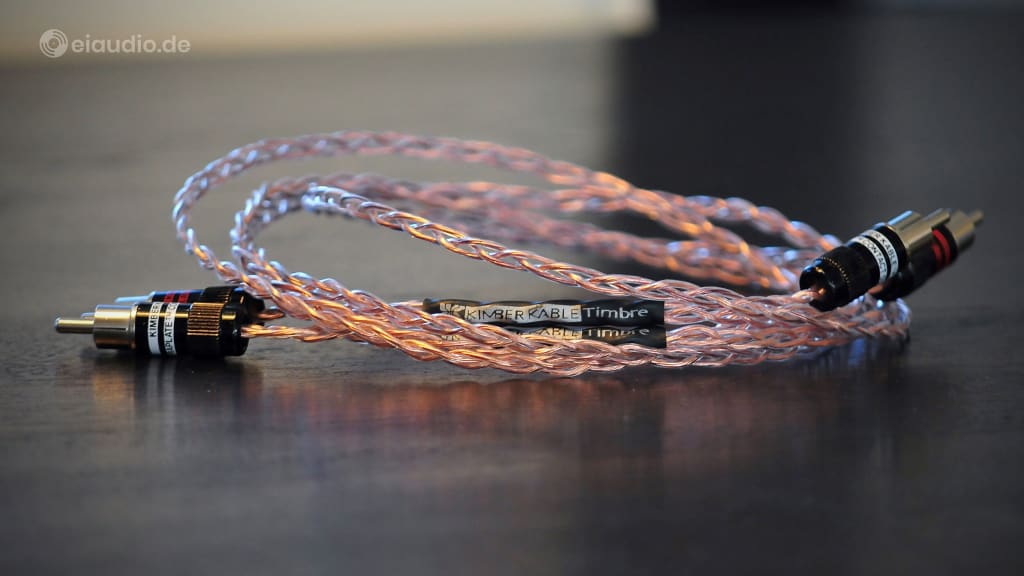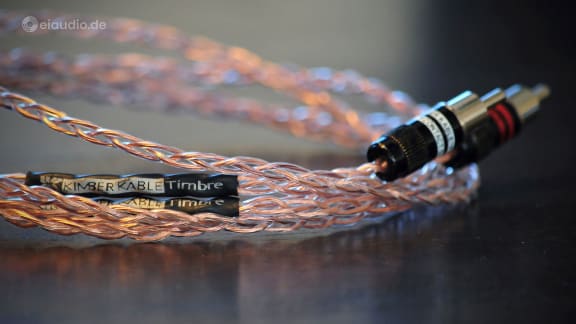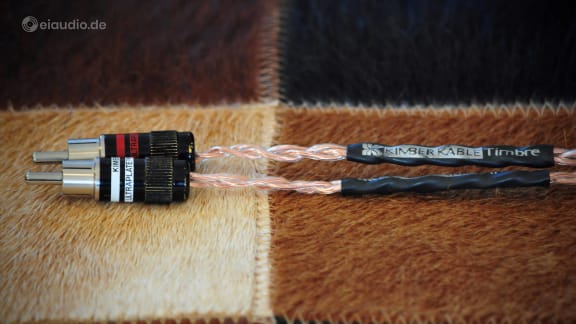Kimber Kable Timbre
Published: 09/01/2021
Manufacturing date: 2024
Author: Karsten Hein
Category: Gear & Review
Tag(s): Cables
“Are you nosy?” My grandfather asked me, seeing that I had gotten up to look outside the window to see which car’s engine sounded so full-bodied in the passing. “No,” was my reply, as I was sitting back down. But I knew it was a lie. Back in the day of former German soldiers turned factory workers, being nosy was considered a nuisance which had to be tamed, a speck of childishness on the way to being a man. And I felt guilty, of course, because I knew I was nosy way beyond my own control.
In today’s world, a playing field of competing ideas rather than battle and obedience, nosiness is considered an asset rather than a burden. What is desired changes over time, and I am fortunate enough to have been born at a time when the doors were beginning to open, and explorations of the individual were again possible. After all, what character trait other than unruly nosiness would make me search for a cable to top the Kimber Tonik, especially at a time that I was very happy with how my system sounded. I am actually listening to the Tonik as I am writing these lines and can only marvel at its ability of getting the harmonics right. However, it is high time to change to the test candidate.
Similar to the Tonik, the Timbre’s design features Kimber’s tri-braid field geometry and VariStrand technology. However, all features are slightly more elaborate. The braided cables comprise individual strands of seven different gauges, not just four. And, although Kimber does not directly specify, their “hyper-pure” copper is most likely OCC rather than “ultra-pure” OFC. The Timbre’s dielectric is made of low loss fluorocarbon, and the terminations are fitted in a nitrogen assisted hand soldering process. Instead of the more basic Ultratike plugs, the Timbre is fitted with the more sophisticated Ultraplate RCA-type connectors that are precision-machined from a solid piece of metal and feature a split centre prong for improved contact.
Changing from Tonik to Timbre, some haptic differences become apparent. The Timbre feels thinner, smoother, and is generally less stubborn to manage behind the rack. The Ultraplate plugs may be better engineered, however, they are also harder and less flexible. This makes them a little too tight to be slid all the way onto our Restek V1 preamplifier with its slightly oversized sockets from the 1980s. If the Tonik resembled household installation wires, the Timbre feels more like holding jewellery in one's hands. When it comes to sound, the Timbre also sets itself apart from the Tonik, which can be seen as beneficial, but can also be a hindrance in other scenarios. It all depends how we have set up the rest of our system.
Advert eiaudio/shop:
Where the Tonik’s strength lies in maintaining tonal balance, the Timbre is far more informative. Diana Krall’s voice gets a greater sense of huskiness and realism holding more of the original timbre of her voice. The same can be said about the instruments. On “I Have Changed My Address” the cymbals simmer much longer, and the sound of metal is more realistic than on the Tonik. While the simmering is mostly about a greater width in treble, there are dark undertones that the Timbre layers in ever so subtly, while they go unnoticed with the Tonik. The next song on Diana’s album is “Love Me Like a Man” picks up the pace, and the long simmering of the cymbals slightly overlaps with the music that follows. This leads to a bit of congestion in the treble and thereby draws the listener’s attention to it, making it seem slightly off balance, which it is not. Treble congestion is something I have not experienced on the Tonik, and, depending on the rest of your setup, can become a reason for listening fatigue.*
The Timbre sets a wonderful stage which is at once wide and deep. There is ample space between the instruments and individual notes are often flung deeply into the room or beyond the left or right of the speaker position. Diana Krall who is usually the only singer on her albums and mostly positioned centre stage, appears lifelike and three-dimensional in front of me with the instruments arranged around her. Musical instruments are clearly discernible in their individual character—or timbre—and given their own space to perform. The Timbre’s ability as a performer and entertainer makes it an interesting contender in the step above entry-level range. Its revealing nature will surely raise the bar for your existing components and go a long way in helping you to optimise your system. On our smaller system—which I mostly use for nighttime listening—I might change back to the Tonik at some point, which is far less exciting to listen to. But will I be able to do it without feeling that I am missing something? It will be difficult for sure because I still am way too nosy.
Tested on the following setup: CD player: Denon DCD 1420 (on Digital Coax HiVilux Reference); DAC: Cambridge DacMagic 100 (on Kimber Kable Timbre); Preamp: Restek V1 (on Wireworld Luna 7); Power amp: Hafler XL-280; and Tannoy XT8F (bi-wired, on Belden 9497)
Specifications
-
Cable lengths: 100cm
-
DC loop resistance: 0.057 Ohm/m
-
Parallel capacity: 62.1 Pikofarad/m
-
Serial Inductance: 0,493 Microhenry/m
-
Characteristic impedance: N.N.
-
Handling: directional, smooth flexible
-
Termination: rhodium plated, Teflon insulator
-
Position tested: CD player + DAC to preamplifier
* Note: 4 Apr 2021 — I have meanwhile found out that the treble congestion described above was caused by one Timbre strand touching another audio cable behind the rack. When suspended freely, the cable stays well ordered, also in faster passages. Cables without mesh shielding appear to be even more sensitive to physical contact than their shielded counterparts.





